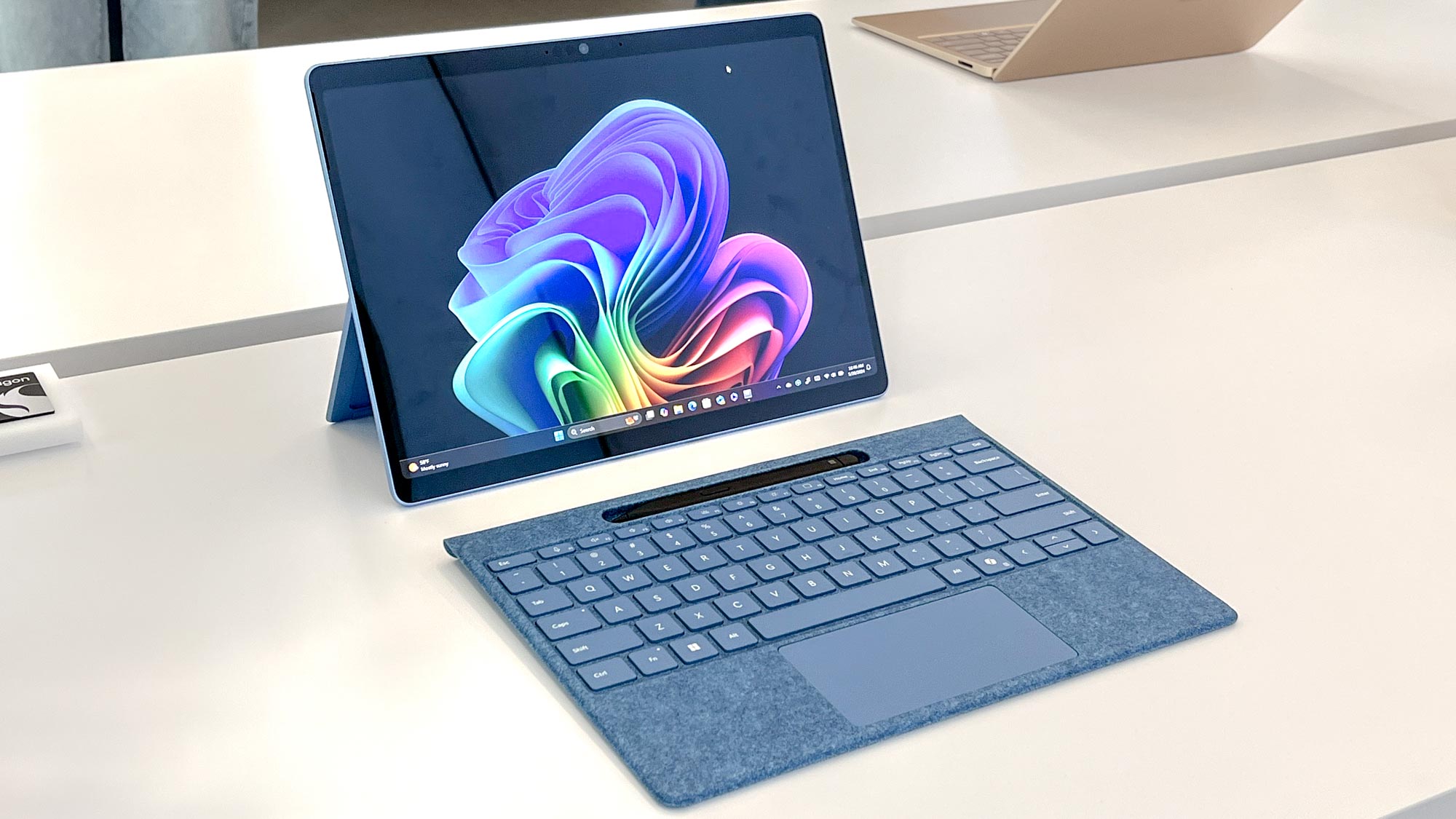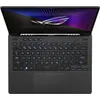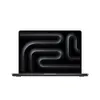We just benchmarked the first Snapdragon X Elite laptops — Apple and Intel are on notice
Qualcomm isn’t messing around in its fight against Intel and Apple

The first Snapdragon X Elite and Snapdragon X Plus laptops have arrived and we're putting them to the test in our labs. Qualcomm’s new Arm-based processors promise to deliver performance and efficiency on par with Apple’s M-series chips. Given how the best MacBooks are the current gold standard for power and endurance, Snapdragon X chips could make the best Windows laptops as enticing as Apple’s notebooks.
Tom’s Guide has tested or is testing several Snapdragon X laptops like the Asus Vivobook S 15, Microsoft Surface Pro 11 and HP Omnibook X. Based on our test results so far, Snapdragon X Elite matches or exceeds Apple M processors. They also keep pace with laptops packing Intel’s AI-focused Meteor Lake chips. Battery life results are still pending, though we have at least one promising result to discuss.
So how well does Snapdragon X Elite perform against the competition? You can see our performance benchmark results below. We’ll update this post with more battery life results as soon as we have them.
General performance

The Snapdragon X Elite is indeed a powerful laptop processor. So far, we’ve tested units packing the Snapdragon X Elite X1E80100. This CPU features 12 cores, a base clock of 3.4GHz and 45 TOPS. It’s not the highest-end X Elite chip, but it’s not the lowest-end either, as you can see on Qualcomm’s website. The results are rather impressive.
On Geekbench 6, which tests overall CPU performance, the Snapdragon X Elite performed well in the single and multi-core benchmark tests. Qualcomm previously claimed its silicon could crush the Apple M3 chip. While that isn’t exactly the case, Snapdragon X Elite laptops are certainly on a par (or better) than Apple silicon. The chip also does well when compared to the Intel Core Ultra 7 155H CPU, which is the mid-range Meteor Lake processor.
| Header Cell - Column 0 | Geekbench 6 (single-core) | Geekbench 6 (multi-core) | Handbrake (mins:secs) |
|---|---|---|---|
| Microsoft Surface Pro 11 (X Elite) | 2,813 | 14,432 | 5:24 |
| HP OmniBook X (X Elite) | 2,347 | 12,861 | 6:20 |
| HP EliteBook Ultra (X Elite) | 2,371 | 12,717 | 6:24 |
| Asus Vivobook S 15 (X Elite)* | 2,418 | 14,352 | 6:50 |
| MacBook Air 13-inch M3 | 3,082 | 12,087 | 7:40 |
| MacBook Air 15-inch M3 | 3,102 | 12,052 | 6:34 |
| MacBook Pro 14-inch M3 | 3,037 | 11,968 | 5:38 |
| Dell XPS 14 (Meteor Lake) | 2,326 | 12,701 | 5:49 |
| HP Omen Transcend 14 (Meteor Lake) | 2,362 | 13,248 | 4:57 |
| Acer Swift Go 14 (Meteor Lake) | 2,364 | 12,612 | 5:16 |
While the M3-powered MacBook Air 13-inch, MacBook Air 15-inch and MacBook Pro 14-inch have better single-core performance than their rivals, notebooks with X Elite and Ultra 7 CPUs have better multi-core performance — especially the Microsoft Surface Pro 11. You probably won’t notice a major difference during real-world use, but it’s interesting to see M3 lagging in multi-core.
Snapdragon X Elite laptops also fared well on our Handbrake video editing test, which involves transcoding a 4K video clip to 1080p. The Surface Pro 11 performed the task a minute faster than HP’s notebook. All X Elite laptops finished faster than Apple M3 MacBooks, though Meteor Lake machines were generally faster overall.
Sign up to get the BEST of Tom's Guide direct to your inbox.
Get instant access to breaking news, the hottest reviews, great deals and helpful tips.
Note that the numbers for the Asus Vivobook S 15 are taken directly from Managing Editor Jason England's testing and not numbers from our testing lab. We'll update these numbers once we've gotten our hands on Asus' laptop, which should be soon.
Gaming performance
Don’t expect to play the best PC games at decent frame rates on Snapdragon X Elite laptops. Certain titles like Fortnite can’t run on these machines since they weren't built for Arm-based computers. You can use the Prism emulation tool to run x86 games on Arm, but the fact remains that playing games natively on these machines could be an issue.
| Header Cell - Column 0 | Civilization VI frame rate rest results (@ 1080p) |
|---|---|
| Microsoft Surface Pro 11 (X Elite) | 20 fps |
| HP OmniBook X (X Elite) | 20 fps |
| MacBook Air 13-inch M3 | 41 fps (@ 1200p) |
| MacBook Pro 14-inch M3 | 51 fps (@ 1200p) |
| Dell XPS 14 (Meteor Lake) | 47 fps |
| Acer Swift Go 14 (Meteor Lake) | 36 fps |
As you can see above, Civilization VI, which isn’t a graphically demanding game, only hits 20 frames per second on the Snapdragon X Elite laptops we’ve tested. Though it couldn't quite hit 60 fps on M3 or Meteor Lake laptops, the game runs at acceptable frame rates.
This is just one game, though. We'll be benchmarking other titles as well as we continue our testing of Snapdragon X Elite laptops.
| Header Cell - Column 0 | Microsoft Surface Pro 11 | Acer Swift Go 14 |
|---|---|---|
| 3DMark Time Spy | 1887 | 3827 |
| 3DMark Fire Strike | 5743 | 8046 |
| 3DMark Night Raid | 24853 | 27154 |
Snapdragon X Elite also didn't do well compared to Intel Core Ultra in the 3DMark graphics test.
Bottom line, you’re better off with one of the best gaming laptops if you want to play demamding games.
Battery life (preliminary)
We’re still conducting battery tests on our Snapdragon X Elite laptops. This is because, at time of writing, two of these machines have been running for well over 12 hours. And given the first test result for one of these machines, it seems that Snapdragon X could finally help Windows laptops last nearly as long (or perhaps longer) than MacBooks.
| Header Cell - Column 0 | Time (hours:mins) |
|---|---|
| Microsoft Surface Pro 11* | 12:10 (first run) |
| MacBook Air 13-inch (M3) | 15:10 |
| MacBook Air 15-inch (M3) | 17:16 |
| Acer Swift Go 14 | 8:25 |
In our battery test, which involves continuous web surfing over Wi-Fi with the display set to 150 nits of brightness, the Microsoft Surface Pro 11 lasted 12 hours and 10 minutes. We usually perform three battery tests and average the times out, but the fact we’re seeing a little over 12 hours on a Windows machine is a great sign.
While 12 hours is impressive, that's still not close to the MacBooks in the table above. But to be fair, few laptops can match Apple's in terms of battery life.
Compatibility issues
As we’ve reported, CoPilot+ PCs won’t run various apps and games at launch. Samsung has posted which apps and games won’t run on its Galaxy Book 4 Edge. Given how this notebook runs on a Snapdragon X Elite chip, we expect the listed apps and games also won’t run on similar laptops from other manufacturers.
The compatibility notice (first reported by The Wall Street Journal), states that many security programs, various Adobe software and the Google Drive desktop app won’t currently run on Samsung's new Copilot+ PC laptop.
Games like League of Legends and Microsoft’s Halo Infinite also won't run on the Samsung Galaxy Book 4 Edge AI and presumably all CoPilot+ PCs. However, there are over 1,000 games on Steam, Battle.net, Epic Games Launcher and more that are playable at full HD at 30+ frames per second on Copilot+ PCs, says Qualcomm. The company says Snapdragon X Elite also supports cloud services like Xbox Game Pass and GeForce NOW.
Compatibility issues could be resolved as more developers create apps and games for Arm architecture. For example, Adobe Illustrator and InDesign will be compatible in July, with AfterEffects, Premiere Pro and Media Encoder coming soon (according to Adobe). However, other applications may take longer to work on Arm, if at all.
Outlook
Though Snapdragon X Elite doesn't completely annihilate the competition, Qualcomm's chip looks very competitive with Intel and Apple Silicon. Even if its not great for gaming (at the moment), Snapdragon X Elite laptops offer excellent performance and (potentially) strong battery life.
If more Snapdragon X Elite (and X Plus) laptops deliver similar results, I think it's safe to say that Qualcomm has put Apple and Intel on notice.
More from Tom's Guide
- Microsoft unveils Copilot Pro for $20 per month
- I thought Microsoft Copilot was an AI gimmick — I was wrong
- Windows 11 Copilot just got a major upgrade

Tony is a computing writer at Tom’s Guide covering laptops, tablets, Windows, and iOS. During his off-hours, Tony enjoys reading comic books, playing video games, reading speculative fiction novels, and spending too much time on X/Twitter. His non-nerdy pursuits involve attending Hard Rock/Heavy Metal concerts and going to NYC bars with friends and colleagues. His work has appeared in publications such as Laptop Mag, PC Mag, and various independent gaming sites.
-
abufrejoval I wonder if you could provide some details on configurability and setup:Reply
Do these machines use an UEFI boot?
Is there something like a BIOS which allows adjusting major settings such as
deactivate NPU, CPU cores, ports
deactivate secure boot e.g. to enable Linux or import custom keys
change the boot order and boot from USB or network
adjust cTDP settings e.g. for silent mode?Do they enforce Bitlocker or can it be disabled (e.g. for easier transport/swap/copy of NVMe drives)?
Does Windows run virtualized (HVCI) for security/hardening, is Hyper-V supported already and WSL working?
Any idea if tagged memory extensions are turned on and used by Windows OS and major components?
What's TME look like for MS Office and browsers?
Can you confirm ARM 8.7 and report the supported optional ISA extensions?
Driver support for USB/TB Ethernet NICs?
Driver support for USB4/TB docks, IP over TB?
Alt-DP tests, available resolutions, refresh rates (variable for monitors?), chaining -
Golakhs7 Looks like paid content..Microsoft took 4 years to respond but in meantime while stock sky rocketed with GenAI with no revenue. That's MSFT smartness to divert the real problem with new hype till they catchup :)Reply -
schwaggins Do you think we haven't seen the YouTube videos showing how awful these things currently run?Reply
It's going to take YEARS of software/driver updates before it's up to scratch It's a mess.
Saying Qualcomms performance & battery life claims are legit is just absurd at this point










